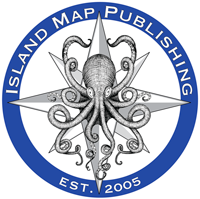This stretch of the Keys is one of my favorites to drive through with several bridges and beautiful views. I like some of the restaurants on Lower Matecumbe and also the interesting history of Indian Key and Long Key with it’s once famous Long Key Fish Camp, where billfishing was popularized by Zane Grey in the early 1900s.
The name Matecumbe was likely a Spanish take on a Calusa Indian name for the area. The interface of the Spanish and Indians was so violent at first that it’s been suggested the name comes from a Spanish word meaning “to kill man.” The fate of early ship wreck victims was indeed violent as they were either killed or enslaved by the Calusa.
Indian Key was the site of a later Indian attack during the Seminole Indian Wars. Dr. Henry Perrine and other settlers were killed there in 1840 during a violent period as the U.S. Army attempted to relocate the Florida Indians to Oklahoma. Perrine served as an American consul in Mexico, where he looked for ways to introduce useful tropical plants to the U.S. In 1838 he moved to Indian Key and started a plant nursery on Lower Matecumbe. He’d been working on a land grant when he was killed and the family ended up with a large piece of property near Miami, today’s community of Perrine.
Indian Key had a store which supplied ships in the area that worked in the lucrative wrecking trade (salvaging cargos from wrecked ships). Later It would be served by the railroad’s Indian Key station on Matecumbe, where the train would stop on its way to Marathon in 1908 and eventually to Key West in 1912. Indian Key, like Lignumvitae Key, is a state park today.
Lignumvitae Key has some of the highest natural ground in the Keys at sixteen feet above sea level. Lignum vitae is a tropical hardwood tree that produces a hard and oily wood prized in early shipbuilding. The Matheson family once lived on Lignumvitae, their house built a few years after the railroad passed through the adjacent mainland. It was sold to the Nature Conservancy in 1970 and is now a botanical state park filled with other interesting trees like gumbo limbo and poisonwood.
Early Spanish charts show Long Key as Cayo Vivora. The island was a work camp for the railroad and, when the hurricane of 1906 struck, a barge housing railroad workers broke loose drowning many of the men aboard. The Long Key Fishing Camp was established in 1908 and famous fishermen and authors like Zane Grey and Ernest Hemingway visited and wrote about the virtues of fishing in the Florida Keys. The sport of sailfishing was started there, a fish that had formerly been denounced as “boohoo” or “spikefish” as they sliced through lines while pursuing more edible fish. Grey rebranded sailfish the “gamiest and most beautiful fish,” launching a passion for many fishermen that persists to this day.
Fishing is still great in the area and the spirit of Zane Grey lives on!
For more on the history of the Keys in Florida, check out our newest book here! You can also take a look at our various maps of Florida, the Caribbean, the East Coast and even the Great Lakes at islandmapstore.com. Please call (239) 963-3497 for any questions regarding the books or maps!



